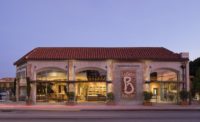Foodservice bakery business insights

Katina Beniaris, Editorial Intern
According to the National Restaurant Association, foodservice sales are expected to reach $782.7 billion in 2016, up from $586.7 billion in 2010. Bakery foodservice providers play an important role in the success of these restaurants.
Bakeries nationwide offer foodservice baked goods for every type of restaurant—from the artisan pretzel buns at a local fine-dining establishment to a flatbread concept for a national pizza chain. And bakers still continue to improve their foodservice product-development process and overall business strategy.
Custom collaboration
Michele D. Giampaolo, director of sales and marketing at Formica Bros. Bakery in Atlantic City, NJ, explains bakeries must walk “in the shoes of the customer first.” She asks her restaurant customers, “What are you doing with the bread? What are you trying to do? What on the menu are you trying to achieve?” That way, she says, they don’t have to sort through the 200 and 300 pieces of bread that we have available. Formica Bros. produces about 85,000 pieces a bread per day for its restaurant clients.
Collaboration is key when working with restaurant customers. Alpha Baking Co. in Chicago works directly with its clients to develop customized solutions. “On the collaboration side, it’s an open platform,” says Gary Narcisi, group vice president of frozen foodservice & retail divisions. “We want customer interaction. We want customer direct engagement. We encourage customers to come to our R&D facility and have their chefs or their R&D people work with our R&D people.”
Alpha Baking’s restaurant customers vary from fast food to fine dining. The bakery focuses on two areas: frozen products nationwide and fresh products within a 100-mile radius of Chicago. Creation of an R&D facility has opened up possibilities for customized products, which has been a major change for approaching restaurant customers.
Narcisi adds, “Those collaborative efforts come up with some pretty unique formulas and products that we sell.”
According to La Brea Bakery in Los Angeles, working with restaurant customers can pose challenges, such as effectively negotiating prices. “It’s the balance between quality and the price,” explains Jonathan Davis, senior vice president of culinary research. “Finding that right balance for each individual is probably the most difficult.”
Top trends
Baked goods foodservice trends range from bold flavors to increased transparency. Narcisi says: “The American palate is changing so rapidly. There are a lot of different requests coming from different customers.”
Nontraditional products are now in demand, and this year, bold flavors rise to the top. Alpha Baking Co. has created products with ghost peppers and sriracha hot sauce. Consumers still maintain interest in organic products, as it ties to the now-popular transparency theme.
“You see a lot of callouts on menus where the meats come from and where produce comes from,” Davis explains. This sourcing transparency is also extending to baked goods. “We’re starting a project where we have traceability of the flour we use all the way back to the farm,” he says. “It can be called out on menus or otherwise communicated to the consumer. Transparency is a big one.”
Another trend is extending product shelf life, and finding multiple uses for items across multiple dayparts and menu items. Davis says: “We’ve seen a big focus on breakfast.” Sometimes, breakfast will go all day. But he also notes that some of those same morning breads can be used all the way through dinner service at various points on operator menus.
As is the case elsewhere across the food industry, restaurants today increasingly seek to reduce food waste. Giampaolo shares recipes with Formica Bros. restaurant customers on how leftover bread can be used to create croutons or transformed to a chocolate bread pudding.
The nearly century-old bakery is also aware of the growing national trend for frozen products. “We’re in an area where fresh breads are still king,” says Giampaolo. “But more and more foodservice restaurants are bringing in frozen breads.” Baking off only the product that is needed on a daily basis helps operators reduce food waste and maximize freshness.
Looking ahead
Bakeries continue to stress the importance of offering the best service options for all their customers, and customized products will likely play a big role.
“Everybody is going to want things that are unique to them,” says Davis. “To balance that is going to be a challenge for a lot of people.” He thinks it’s going to be an obstacle for bakeries to find a way to bring individuality to each of their foodservice customers.
But effective collaboration and communication will go a long way to help restaurant customers grow sales.
“We need to appreciate and understand what a chef or their staff is trying to achieve, and what kind of environment they’re operating in,” says Giampaolo. “We’re serving their customers. It’s a circle.”
For more on how Alpha Baking Co., Formica Bros. Bakery and La Brea Bakery—the Snack Food & Wholesale Bakery 2016 “Bakery of the Year”—strategically build foodservice sales into their business plans, see:
- “Alpha Baking Co.—Growth through diversity”
- “Formica Bros. Bakery and the legacy of Atlantic City artisan bread”
- “La Brea Bakery, artisan bakery to the nation”
Looking for a reprint of this article?
From high-res PDFs to custom plaques, order your copy today!





